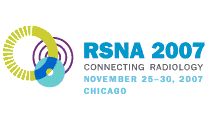
Abstract Archives of the RSNA, 2007
Maria Lourdes Diaz MD, Presenter: Nothing to Disclose
Alberto Alonso-Burgos MD, Abstract Co-Author: Nothing to Disclose
Beatriz Zudaire, Abstract Co-Author: Nothing to Disclose
Carmen Blanca Hernandez MD, Abstract Co-Author: Nothing to Disclose
Javier Larrache MD, Abstract Co-Author: Nothing to Disclose
Loreto Garcia del Barrio MD, Abstract Co-Author: Nothing to Disclose
According to the Spanish Public Health Institute, between September 2006 and February 2007, a total number of 955 mumps cases were reported in the Spanish region of Navarra in what has become the largest recorded epidemic of mumps in Spain.
This retrospective study analyses the findings and role of ultrasound (US) studies of the salivary glands in the management of patients with mumps during the Navarra outbreak.
Between September 2006 and February 2007, 41 patients with facial sweeling underwent US evaluation of the salivary glands in order to confirm a provisional diagnosis of parotiditis, rule out other causes of facial swelling (adenopathies, venous thrombosis, etc) and possible complications of parotiditis (abscess formation). Their clinical history, US findings and final diagnosis were reviewed retrospectively.
Out of the 41 patients who underwent US, 40 of them showed findings suggestive of acute inflammation of the salivary glands. These patients gave positive serology results (Specific IgM) and the diagnosis of mumps was confirmed.
We classified the US findings according to:
1.Pattern of salivary gland involvement
2.Pattern of lymph node involvement
3.Regional soft tissue changes
4.Doppler US findings
No cases of abscess formation were found. One patient was diagnosed with sialolithiasis.
Though the diagnosis of mumps is made on the basis of clinical history and serology tests, our results show that, in the management of these patients, US of the salivary glands:
1. Provides diagnostic information even before the serology results are available
2. Can exclude possible complications (abscess formation)
3. Can rule out other causes of parotid gland swelling (sialolithiasis) and other causes of facial swelling
US of salivary glands was a safe, non-invasive technique that provided diagnostic information for the management of patients and the implementation of preventive methods for the population.
Diaz, M,
Alonso-Burgos, A,
Zudaire, B,
Hernandez, C,
Larrache, J,
Garcia del Barrio, L,
Parotiditis Outbreak: Is There a Need for Salivary Gland Ultrasound?. Radiological Society of North America 2007 Scientific Assembly and Annual Meeting, November 25 - November 30, 2007 ,Chicago IL.
http://archive.rsna.org/2007/5002116.html

